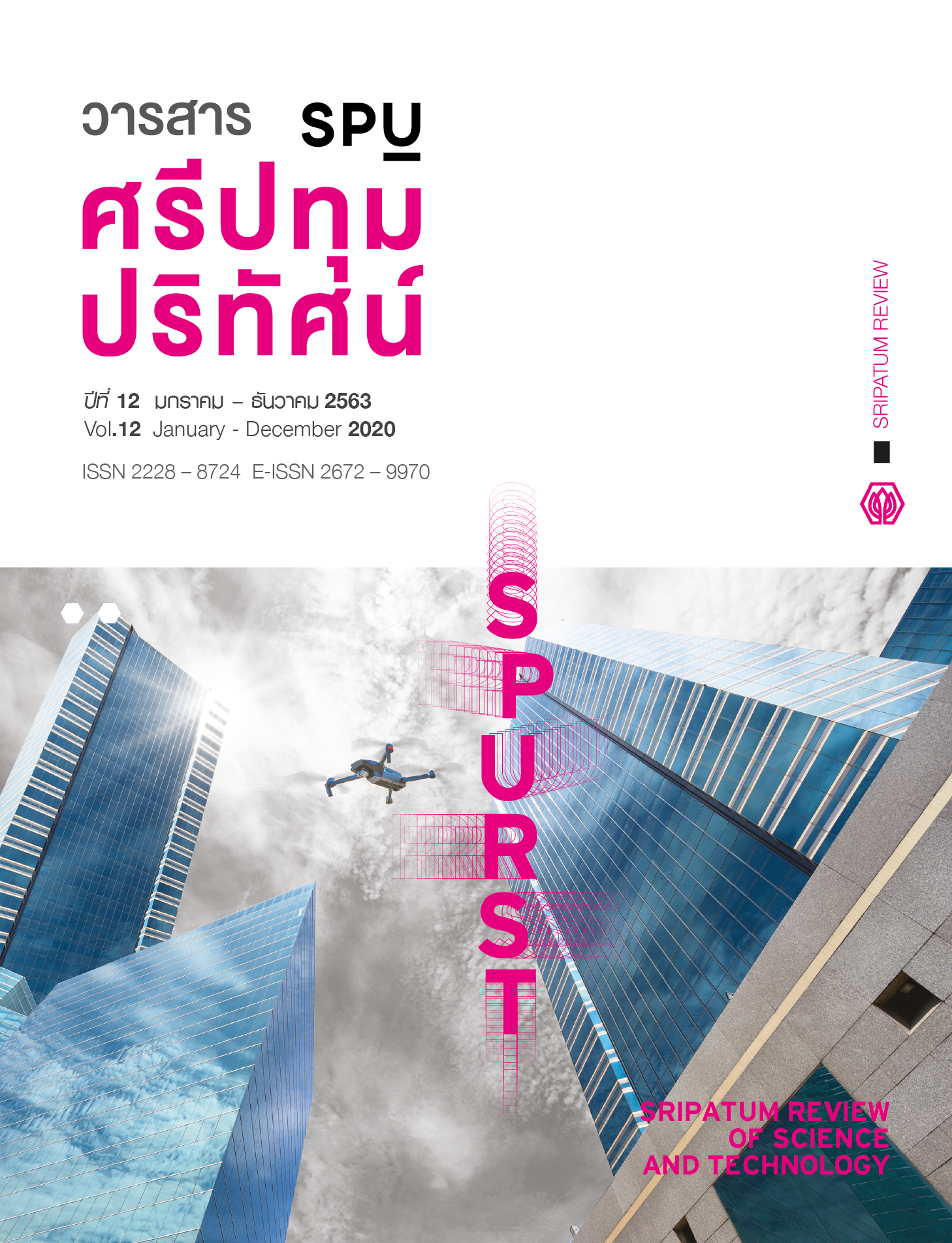Web Japanese Language skills training on the internet for employees in food processing factories in Lopburi province
Main Article Content
Abstract
The objectives of this research were to develop an appropriate website for Japanese language skills training for employees in frozen food processing industrial factories in Lop Buri province, and to evaluate learning achievement and satisfactory of users of the website for Japanese language skills training. The research sample consisted of 52 employees at the foreman level of the B. Foods Product International Company in Lop Buri province. The data was collected and statistically analyzed using the mean, standard deviation, and t-test. The results were as follows: (1) the developed website for Japanese language skills training for employees comprised 4 lessons: Japanese for the Beginners, Parts of Chicken, Processed Cooked Chicken Products, and Japanese Culture; the efficiency of the website was at 81.70/83.63, which was higher than the pre-determined criterion; and (2) regarding the evaluation results, it was found that the website users were satisfied with the website at the high level in all aspects including the aspects of its functional work usage, its efficiency, its reliability, and its responsiveness to the website users; as for the learning achievement of the website users, it was found that the post-learning mean score of the users was significantly higher than its pre-learning counterpart mean score ( = 25.09, t = - 9.295, df = 46) indicating that this developed website for Japanese language skills training could significantly increase the users’ Japanese language skills at the .05 level of statistical significance, which responded to the needs of using Japanese language in communication for employees in the industrial sector.
Article Details
References
B. Foods Product International Co., Ltd. (2018). Human Resource Monthly Report December 2018. Lopburi: Human Resource Department. (in Thai)
Chinnery, G.M. (2006). Going to the MALL: Mobile assisted language learning. Language Learning and Technology, 10, 9-16.
Education Technology Center. (2004). The report quality of assessment’s lesson on website. Bangkok: Office of Non-Formal Education Administration Office of the Permanent Secretary for Education. (in Thai)
Kim, H. (2013). Emerging mobile apps to improve English listening skills. Multimedia-Assisted Language Learning, 16, 11-30.
Kochhunanan, K. (2016). The use of English for communication of Thai engineers : a case study Japanese companies in Amata Nakorn industrial estate. Sutthipritusna Journal, 30(93), 146-159. (in Thai)
Krejcie, R. V. and Morgan, D. W. (1970). Determining Sample Size for Research Activities. Educational and Psychological Measurement, 30 (3), pp. 607-610. [Online]. Retrieved September 21, 2019, from: https://home.kku.ac.th/sompong/guest_speaker/ KrejcieandMorgan_article.pdf
Marayart, K. (2014). Android Application for Learning Language. Independent Study of the Degree of Bachelor of Science Program in Computer Science. Bangkok: Siam University. (in Thai)
Office of Industrial Economic. (2017). 10 target industries economic driving mechanism for the future. Bangkok: Public Relations and Library Services, Office of Industrial Economics. (in Thai)
Promdang, P. and Thepnuan, N. (2018). The Development of online Training Package on Basic Occupation Health and Safety for Industrial Factory Workers. Sripatum review of science and technology, 10, 44. (in Thai)
Rosell-Aguilar, F. (2007). Top of the pods-In search of a podcasting “pedagogy” for language learning. Computer Assisted Language Learning, 20, 471-492.
Tsubosaka, K. (2012). Japanese language education in University in Thailand – the gap of knowledge of learners and real abilities used in Japanese companies. Collections of Education essays Japanese, 21, 34-42.


